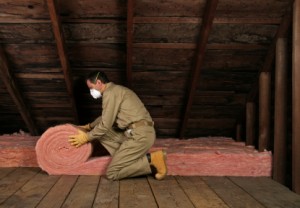 Well they’re forecasting a warm week in Ireland this week, not quite and Indian Summer but warm nonetheless. However the Winter is on it’s way and it is time to think about how to stay warm and reduce energy costs. I was at the Self Build Show in City West in Dublin recently where I watched an expert giving a presentation on insulation and energy saving. I took some notes and have listed them below with some other suggestions as well. My favourite is the curtain idea, effective but cheap:), See below:-
Well they’re forecasting a warm week in Ireland this week, not quite and Indian Summer but warm nonetheless. However the Winter is on it’s way and it is time to think about how to stay warm and reduce energy costs. I was at the Self Build Show in City West in Dublin recently where I watched an expert giving a presentation on insulation and energy saving. I took some notes and have listed them below with some other suggestions as well. My favourite is the curtain idea, effective but cheap:), See below:-
Draught proofing
Draughts are responsible for 20-30% of heat lost in the home, heating bills can be reduced by up to 80% when draught proofing measures are implemented in older homes that were built more than 10 years ago. But don’t forget that draught proofing is no use if you leave your doors and windows open so close those windows and doors and keep in the heat. You can see one of our earlier blogs which covers different types of draught proofing here:- http://blog.tradesmen.ie/2011/01/a-series-on-energy-saving-measures-in-the-home/
Windows
Windows let out the most heat and even the older double glazed windows let out 6 times as much heat as the walls. The ideal thing would be to install a good double glazed window with a double seal around the edges or even the lastest passive windows that keep in almost all of the heat. You can get a number of quotes for windows here on our website and beside where it says ‘Tradesman Required’ select ‘Window Installer’. If you can’t afford new windows then at least buy good heavy curtains. The heavier the curtain the more heat it will keep in. And when you close the curtain tuck it in behind the radiator so that the heat from the radiator comes out into the room and not behind the curtain and out the window. The speaker at the show mentioned that one lady in Galway bought Velcro for her curtains and when she closes them she pats them around the edges to completely seal the curtain to the wall and prevent any heat from leaking out whatsoever (clever:))
Pipes and Water Cylinders
This is an obvious one but still worth mentioning all the same. Many home owners have been caught out in the last couple of years with pipes freezing and then bursting when they thaw out. Burst pipes are not only expensive when it happens but the damage spilled water can create is far more harmful, with leaking or burst pipes causing damage to walls, ceilings, furniture and flooring. You can see a previous blog we did on insulating pipes here, http://blog.tradesmen.ie/2011/01/preventing-freezing-pipes/
Walls, roofs and floors and water cylinder
Heat can also be lost in the home through the floor, roof and attic and the interior and exterior walls. Appropriate insulation in these areas will help reduce heat loss and ultimately reduce fuel costs. Lagging your hot water cylinder will keep the water in your cylinder warmer for longer but also watch the amount of water you heat every day. For example if you live in a one bed apartment on your own it is not necessary to heat the full cylinder for one person, just put it on short boost before you go to bed at night if you have night rate electricity. You can see a previous blog we did on insulation here, http://blog.tradesmen.ie/2011/02/insulation-in-the-home/
Heating systems
At a minimum make sure to have your boiler serviced on a regular basis to ensure that it runs efficiently and safely. Upgrading old and inefficient heating systems can lower the cost of heating. Also, heating controls can regulate the temperatures in different rooms and ensure that certain areas of the home are only heated when they are required. You can get a number of quotes to have your heating system serviced or upgraded here and beside where it says ‘Tradesman Required’ select ‘Heating Contractor’ if it is oil or solid fuel heating or select ‘Gas Fitter’ if it is gas heating.
Irish Grants for Insulation and Energy Efficient works
For small improvements to your home it may not be worth the hassle of going through the grant application process but if you plan on spending a considerable amount of money you should consider applying for a home insulation grant. You can see the grant application form here, https://hes.seai.ie/MeasureRecommendations/MeasureRecommendations.aspx
You can see a list of what grants are available in Ireland here,
http://www.seai.ie/Grants/Better_energy_homes/homeowner/What_Grants_Are_Available/
To get the grant you must use an SEAI approved contractor for your job. We have lots of SEAI approved contractors on Tradesmen.ie so if you’re looking for grant post a job at http://www.tradesmen.ie/getquote.asp with the ‘Job Short Description’ of ‘SEAI approved attic insulation’ or ‘SEAI approved wall insulation’ or whatever the case may be and that will make it clear that you are only looking for SEAI approved contractors to quote for your job.
I hope you found this article useful. If you have any comments, questions or suggestions please feel free to post them below
Best Regards
Oliver Dempsey
Tradesmen.ie







Pingback: Electricity Price Comparison Ireland October 2011 | Tradesmen.ie Blog